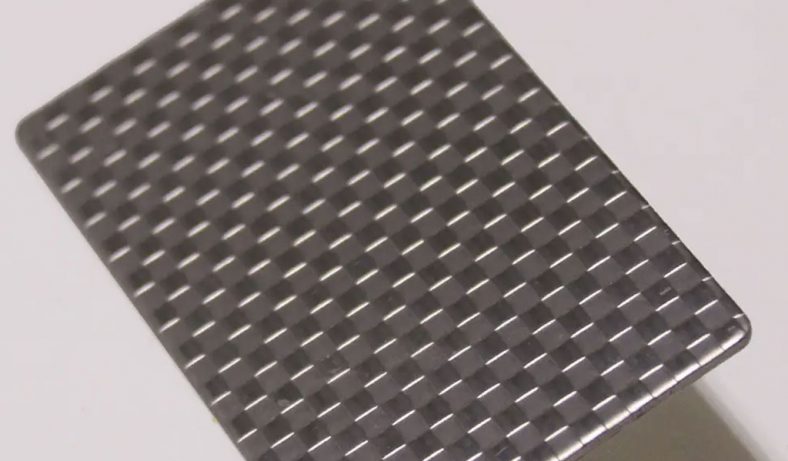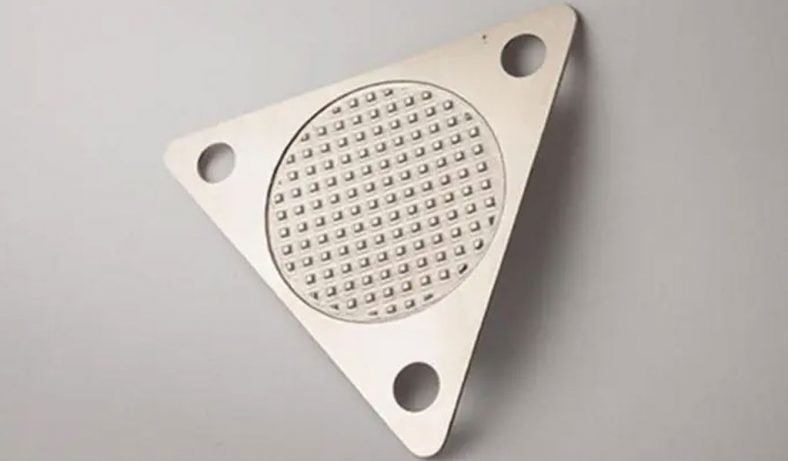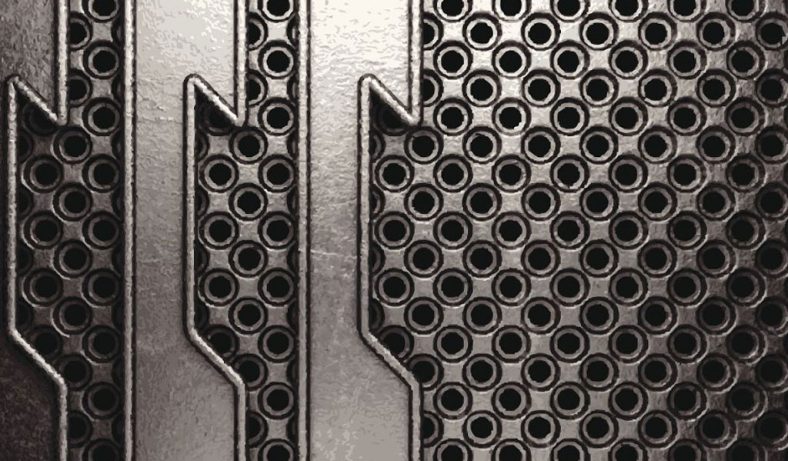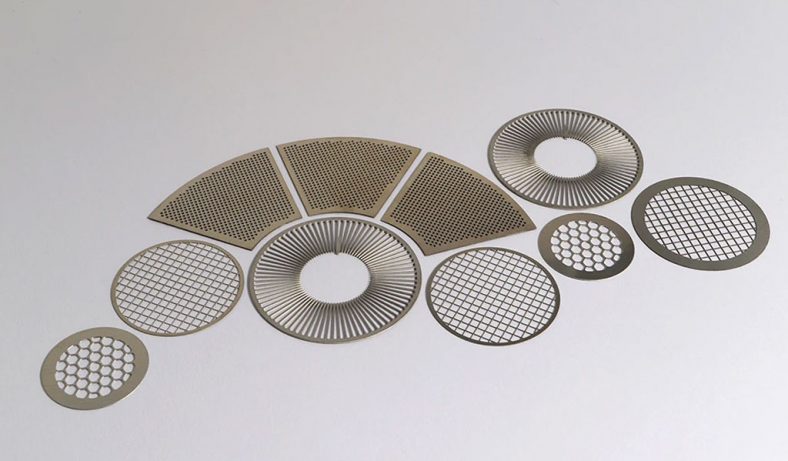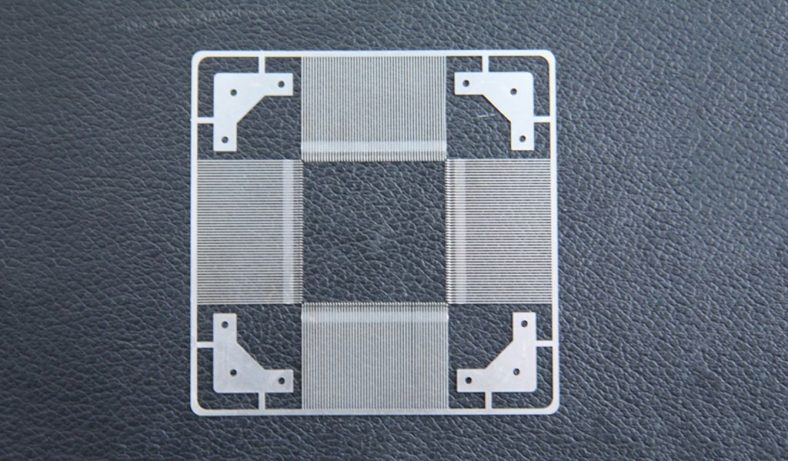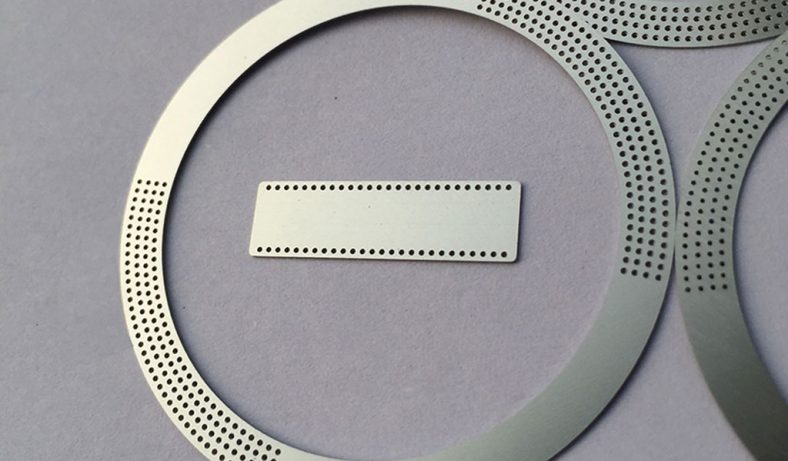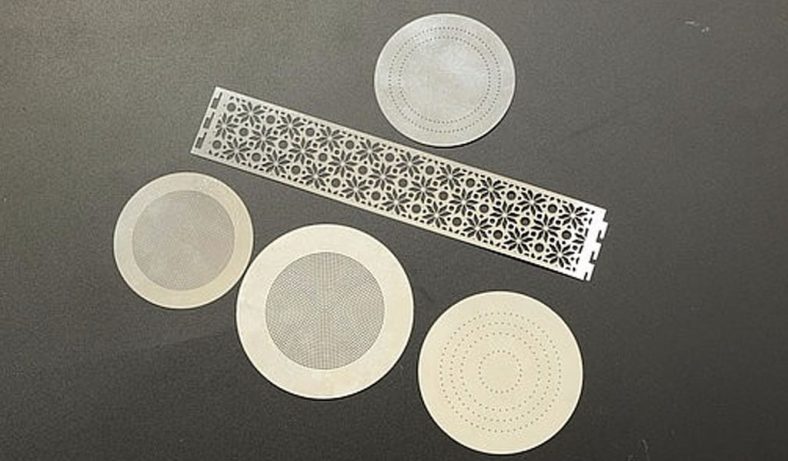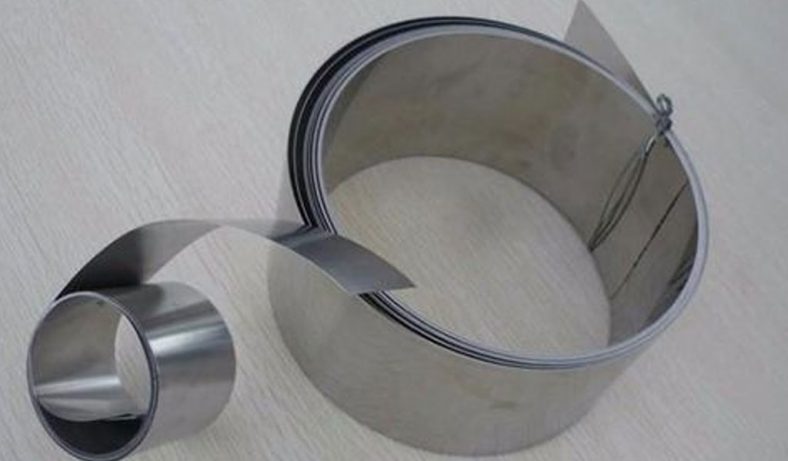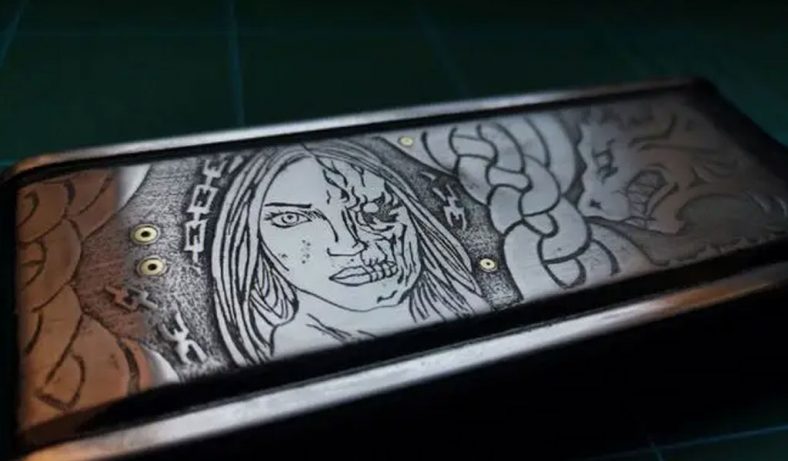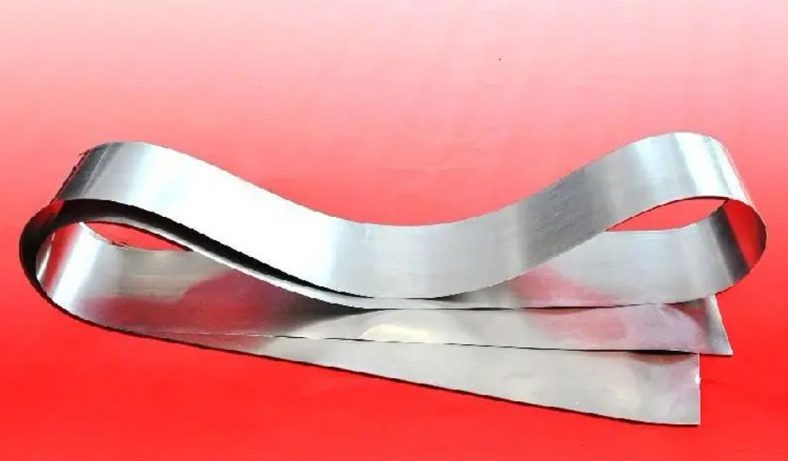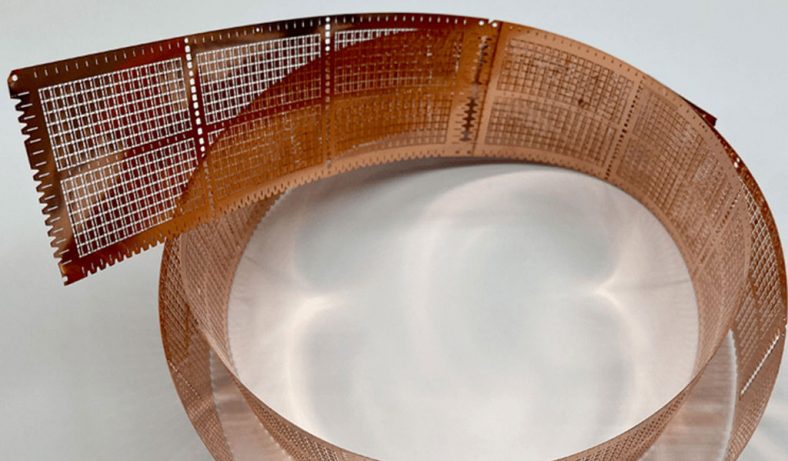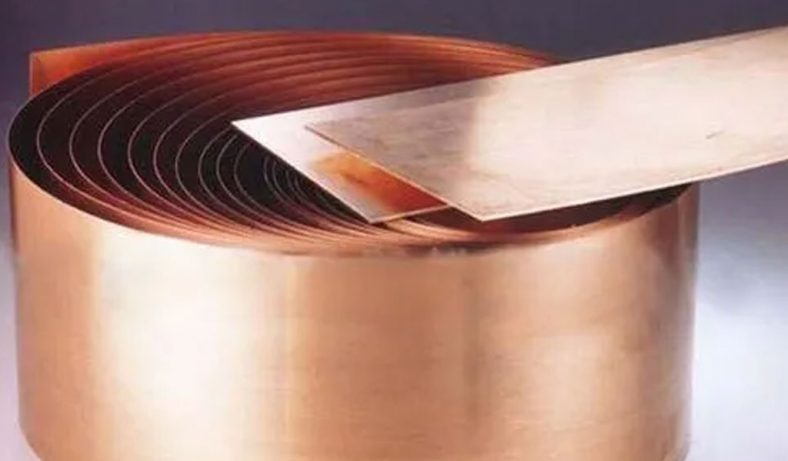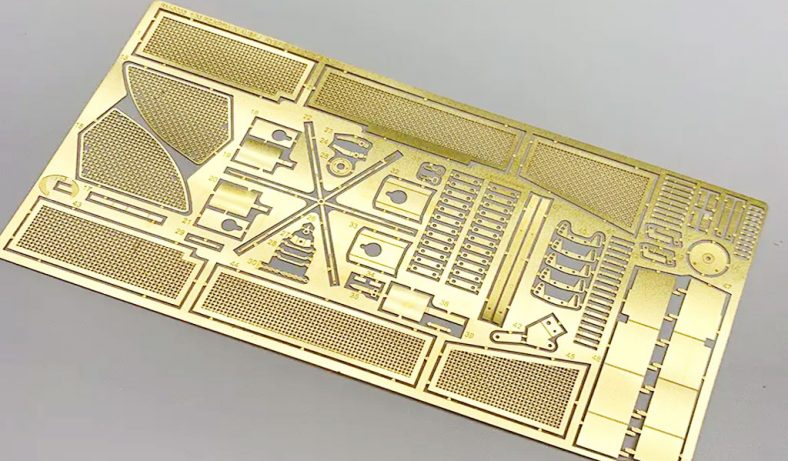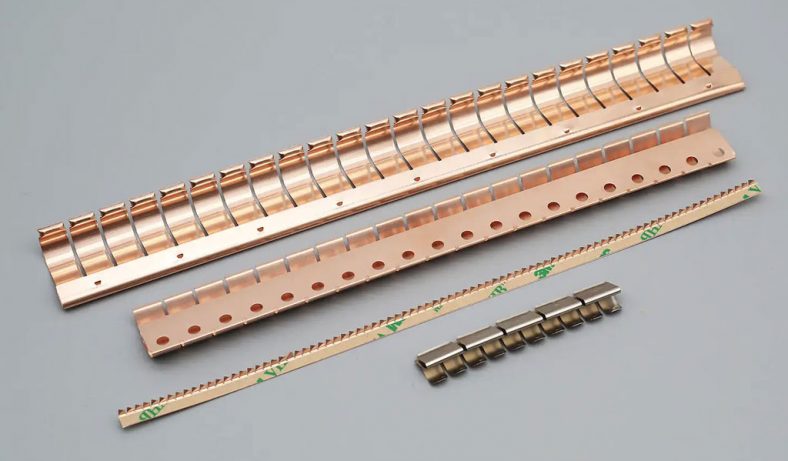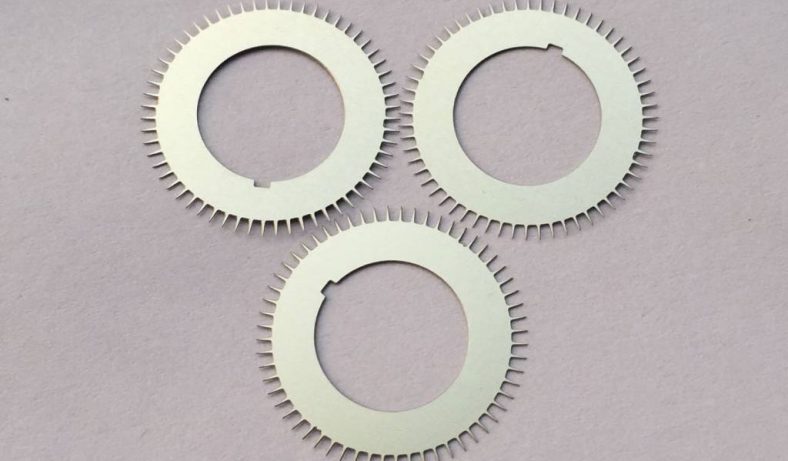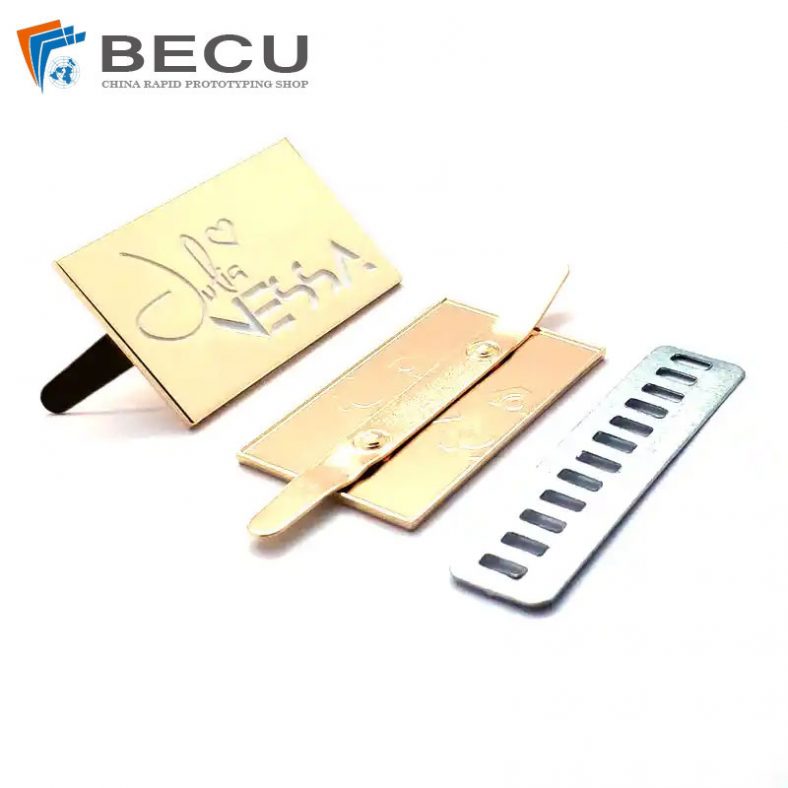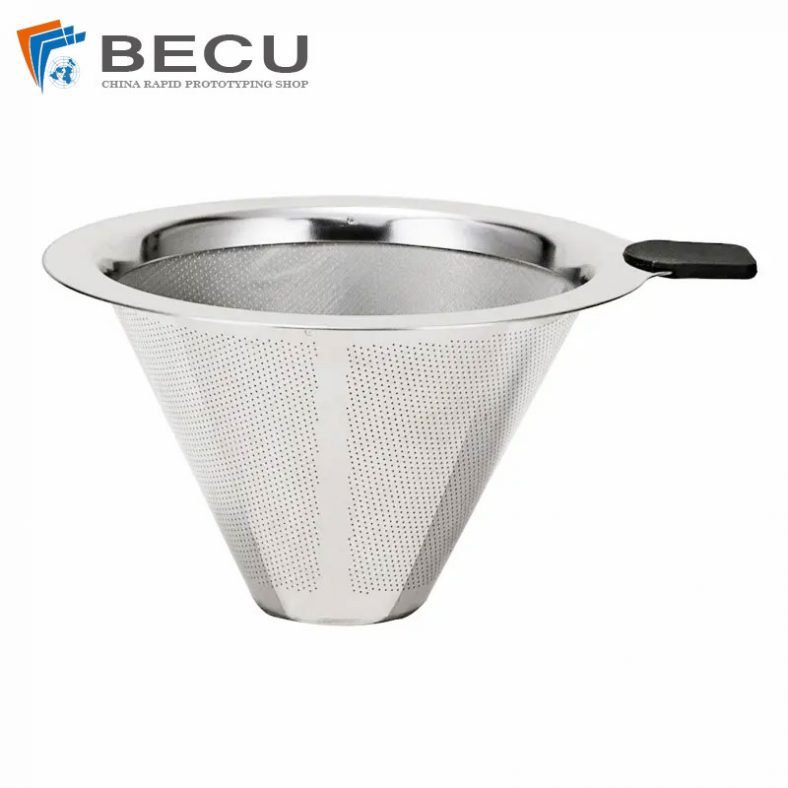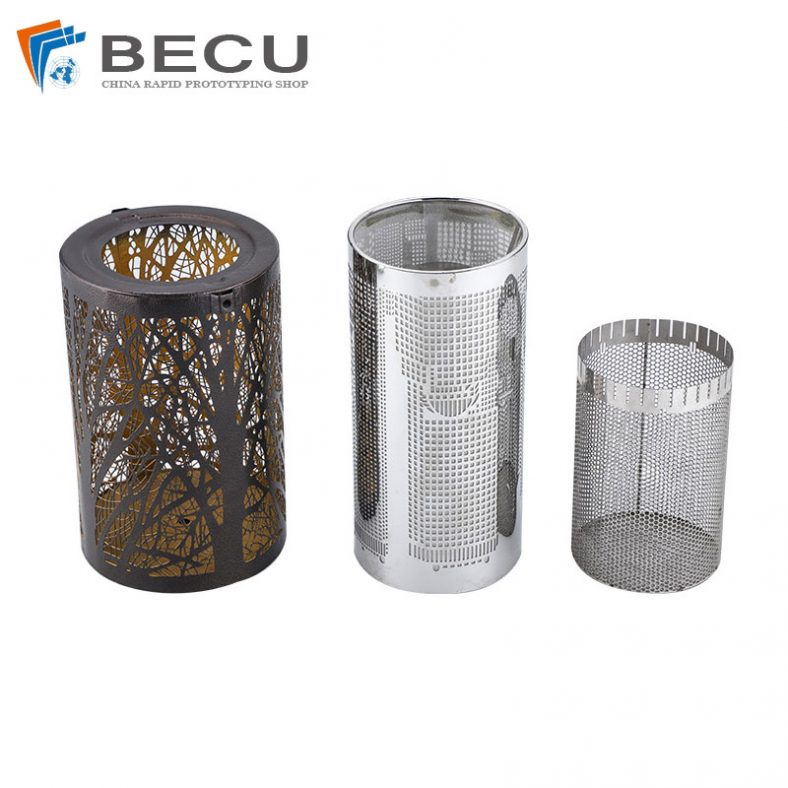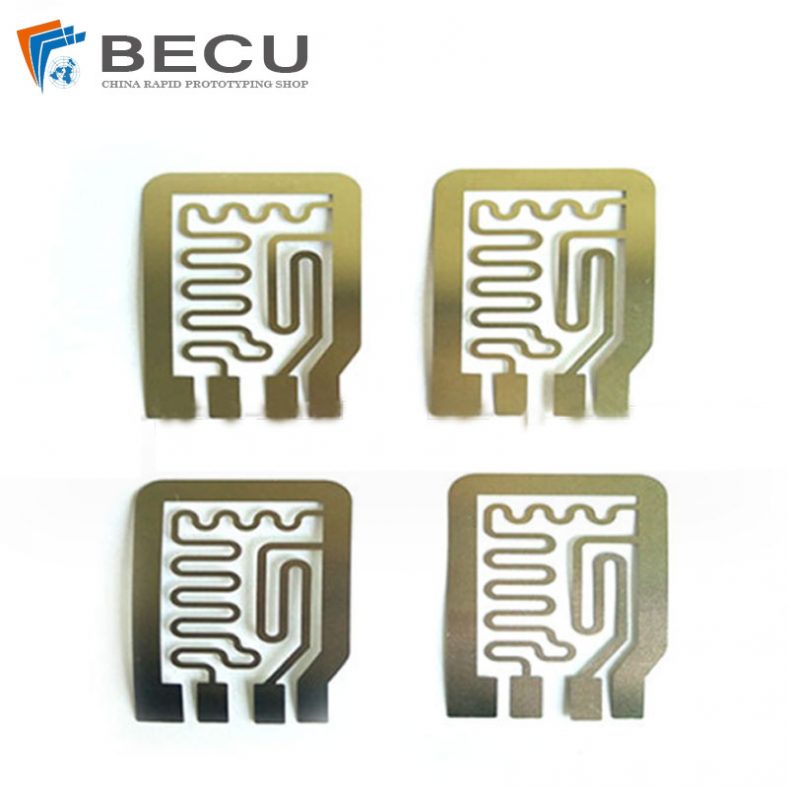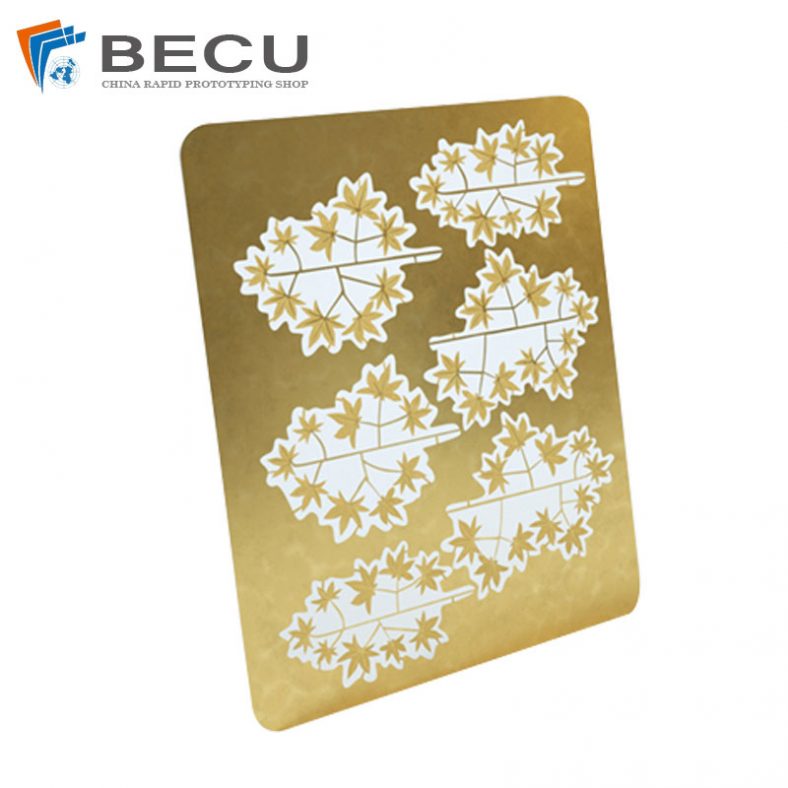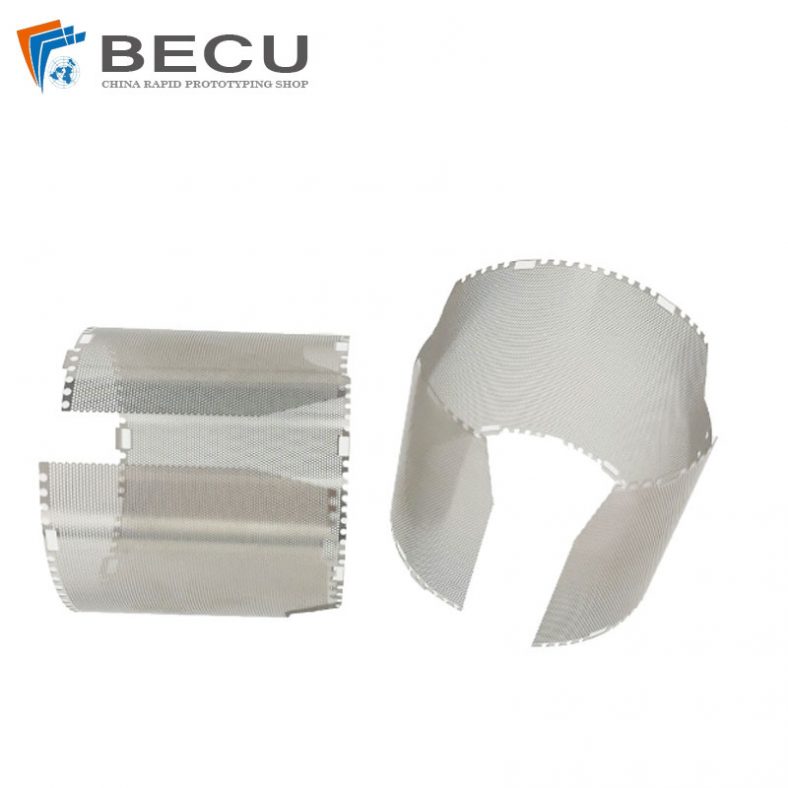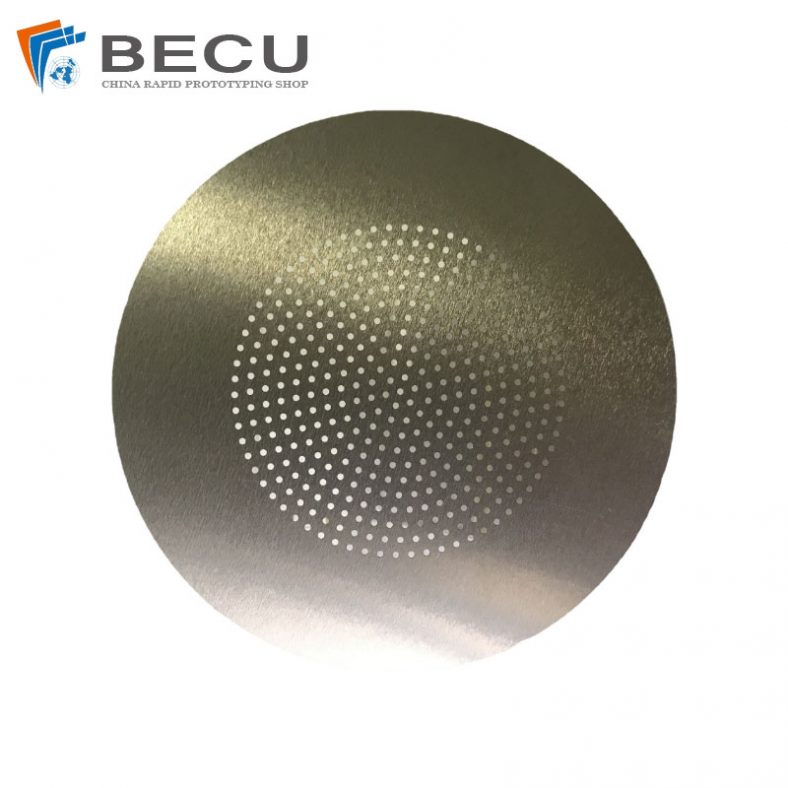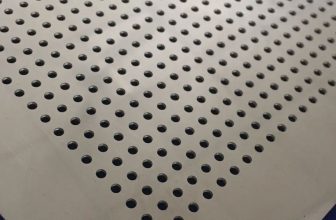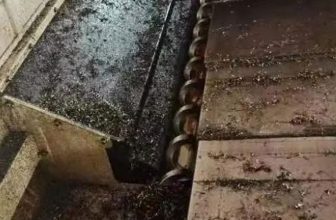Gold alloys are widely employed in the fabrication of micro-devices, particularly in the electronics, optoelectronics, and microelectromechanical systems (MEMS) industries, due to their excellent electrical conductivity, corrosion resistance, and biocompatibility. Wet etching, a liquid-phase chemical process, is a cornerstone technique for patterning gold alloy thin films in micro-device manufacturing. However, the process is fraught with challenges related to defect formation, which can compromise device performance, reliability, and yield. Defects in this context include surface irregularities, undercutting, incomplete etching, redeposition, and contamination, all of which can degrade the functionality of micro-devices. Effective defect control in gold alloy wet etching requires a deep understanding of the chemical, physical, and material interactions involved, as well as the optimization of etching parameters and process conditions.
This article provides a comprehensive exploration of defect control strategies in gold alloy micro-device processing by wet etching. It covers the fundamental principles of wet etching, the types of defects encountered, their origins, and the methodologies developed to mitigate them. The discussion includes detailed comparisons of etching chemistries, process parameters, and their impacts on defect formation, supported by scientific data and tables. Recent advancements, such as the use of surfactants, alternative etchants, and process monitoring techniques, are also examined. The article aims to serve as a definitive resource for researchers, engineers, and practitioners seeking to enhance the precision and reliability of gold alloy micro-device fabrication.
Fundamentals of Wet Etching for Gold Alloys
Wet Etching: Definition and Mechanism
Wet etching involves the selective removal of material from a substrate or thin film using a liquid chemical solution, known as an etchant. For gold alloys, wet etching is typically isotropic, meaning the etch rate is uniform in all directions, leading to rounded or tapered feature profiles. The process relies on chemical reactions between the etchant and the gold alloy surface, where the etchant dissolves the material by forming soluble reaction products. The general reaction for gold etching in an iodine-based etchant, one of the most common chemistries, can be represented as:
[ \ce{Au + I2 + I- -> [AuI2]-} ]
In this reaction, gold (Au) reacts with iodine (I₂) and iodide ions (I⁻) to form a soluble gold-iodide complex ([AuI₂]⁻). The choice of etchant, its concentration, and the reaction conditions significantly influence the etch rate, selectivity, and defect formation.
Gold Alloys in Micro-Devices
Gold alloys, such as gold-silver, gold-copper, or gold-nickel, are used in micro-devices to tailor properties like hardness, electrical resistivity, or thermal stability. These alloys often contain 70–95% gold, with the remainder consisting of alloying elements that modify the material’s mechanical and chemical behavior. The presence of alloying elements complicates wet etching, as each component may react differently with the etchant, leading to non-uniform etching or defect formation. For instance, silver in a gold-silver alloy may etch faster in certain chemistries, resulting in surface pitting or roughness.
Advantages and Challenges of Wet Etching
Wet etching offers several advantages over dry etching techniques, such as reactive ion etching (RIE), including lower capital costs, simpler equipment requirements, and the ability to process multiple wafers simultaneously. It is particularly effective for gold alloys due to the high chemical inertness of gold, which resists many dry etching processes without specialized high-density plasma reactors. However, wet etching’s isotropic nature often leads to undercutting, where the etchant erodes material beneath the mask, compromising feature resolution. Additionally, defects such as surface roughness, residue formation, and contamination pose significant challenges, necessitating robust defect control strategies.
Types of Defects in Gold Alloy Wet Etching
Surface Roughness
Surface roughness refers to irregularities on the etched gold alloy surface, often quantified by metrics such as root-mean-square (RMS) roughness. Roughness can arise from non-uniform etching rates, preferential etching of alloying elements, or the formation of insoluble reaction products. For example, in gold-copper alloys, copper may oxidize and form insoluble oxides, leading to a pitted or uneven surface. Roughness degrades electrical performance in interconnects and optical properties in plasmonic devices.
Undercutting
Undercutting occurs when the etchant removes material laterally beneath the masking layer, resulting in wider features than intended. This is a hallmark of isotropic wet etching and is particularly problematic for high-resolution micro-devices, where precise feature dimensions are critical. Undercutting is influenced by etchant concentration, etching time, and mask adhesion.
Residue Formation
Residues are unremoved material or reaction byproducts left on the surface after etching. These can include unetched gold alloy particles, precipitated etch products, or contaminants from the etchant solution. Residues can cause electrical shorts, poor adhesion in subsequent processing steps, or device failure. For instance, in iodine-based etching, incomplete removal of [AuI₂]⁻ complexes can lead to residue deposition.
Contamination
Contamination during wet etching arises from impurities in the etchant, environmental particles, or redeposition of etched material. Common contaminants include organic residues, metallic ions, or particulate matter. Contamination can alter the electrical or mechanical properties of the gold alloy and is particularly detrimental in MEMS devices, where surface cleanliness is paramount.
Crystal Defects and Microstructural Damage
Gold alloys often exhibit polycrystalline microstructures, with grain boundaries and dislocations that can influence etching behavior. Wet etching may exacerbate crystal defects, such as pitting at grain boundaries or stress-induced cracking, especially in alloys with heterogeneous compositions. These defects can compromise the structural integrity of micro-devices.
Origins of Defects in Gold Alloy Wet Etching
Chemical Factors
The choice of etchant is a primary determinant of defect formation. Common etchants for gold alloys include:
- Iodine-based etchants: Mixtures of iodine (I₂) and potassium iodide (KI) are widely used due to their high selectivity and controllable etch rates. However, high iodine concentrations can lead to residue formation, while low concentrations may cause incomplete etching.
- Cyanide-based etchants: Potassium cyanide (KCN) solutions offer high etch rates but are highly toxic and prone to forming insoluble gold-cyanide complexes, leading to residues.
- Aqua regia: A mixture of nitric acid (HNO₃) and hydrochloric acid (HCl) is effective for gold alloys but is aggressive, often causing undercutting and surface roughness.
- Alternative etchants: Recent studies have explored thiourea-based or cerium (IV)-based etchants to reduce toxicity and improve defect control, though their adoption is limited by slower etch rates.
The etchant’s pH, concentration, and temperature also influence defect formation. For example, acidic etchants may corrode alloying elements like copper, while alkaline etchants can cause precipitation of hydroxides.
Physical Factors
Physical parameters, such as agitation, temperature, and etching time, play a critical role in defect control. Agitation ensures uniform etchant distribution but can introduce turbulence, leading to uneven etching or redeposition. Elevated temperatures accelerate etch rates but may exacerbate undercutting or residue formation. Prolonged etching times increase the risk of over-etching, where excessive material removal causes feature distortion.
Material Factors
The composition and microstructure of the gold alloy significantly affect etching outcomes. Heterogeneous alloys with varying grain sizes or phase distributions are prone to differential etching, where certain regions etch faster than others. For example, in gold-nickel alloys, nickel-rich phases may etch preferentially, leading to surface pitting. The quality of the deposited gold alloy film, including its thickness, adhesion, and defect density, also influences etching behavior.
Masking and Patterning Issues
The masking material, typically a photoresist or hard mask (e.g., silicon nitride), must withstand the etchant without degrading. Poor mask adhesion or defects in the mask pattern can lead to etchant penetration, causing undercutting or irregular feature shapes. Mask residues left after etching can also contribute to contamination.
Strategies for Defect Control
Optimization of Etchant Chemistry
Iodine-Based Etchants
Iodine-based etchants are the most widely used for gold alloy wet etching due to their balance of etch rate, selectivity, and safety. A typical formulation consists of 2–4% I₂, 40–45% KI, and 51–58% water by weight. To minimize defects, the following strategies are employed:
- Concentration control: Maintaining an optimal I₂:KI ratio (e.g., 1:10) ensures sufficient iodide ions to form soluble [AuI₂]⁻ complexes, reducing residue formation.
- Surfactant addition: Adding surfactants like isopropanol (IPA) lowers the etchant’s surface tension, improving wettability and reducing hydrogen bubble adhesion, which can cause residues. Studies have shown that 5–10% IPA reduces residue density by 30–50%.
- pH adjustment: Slightly acidic conditions (pH 4–6) prevent precipitation of etch products while maintaining etch rate stability.
Alternative Etchants
To address the limitations of traditional etchants, alternative chemistries have been developed:
- Thiourea-based etchants: Thiourea (CS(NH₂)₂) in acidic solutions offers a non-toxic alternative to cyanide, with etch rates of 0.5–2 µm/min for gold alloys. However, thiourea can form polymeric residues, requiring careful post-etch cleaning.
- Cerium (IV)-based etchants: Ceric ammonium nitrate (CAN) is a strong oxidant with a standard reduction potential of 1.61 V vs. SHE, effective for gold-copper alloys. CAN etchants reduce undercutting by promoting anisotropic etching characteristics, though their high cost limits widespread use.
- Chlorine-based etchants: Chlorine solutions at elevated temperatures have shown promise for gold etching, with etch rates up to 1 µm/min and minimal residue formation. However, chlorine’s reactivity with alloying elements like silver can cause surface roughness.
Table 1: Comparison of Etchant Chemistries for Gold Alloy Wet Etching
| Etchant Type | Composition | Etch Rate (µm/min) | Selectivity (Au:Mask) | Common Defects | Advantages | Disadvantages |
|---|---|---|---|---|---|---|
| Iodine-based | 2–4% I₂, 40–45% KI, H₂O | 0.5–3 | 100:1 (photoresist) | Residues, undercutting | High selectivity, safe | Residue formation |
| Cyanide-based | KCN, H₂O | 1–5 | 50:1 (photoresist) | Residues, toxicity | Fast etch rate | Highly toxic |
| Aqua regia | HNO₃:HCl (1:3) | 2–10 | 10:1 (Si₃N₄) | Undercutting, roughness | Broad compatibility | Aggressive, unsafe |
| Thiourea-based | CS(NH₂)₂, H₂SO₄ | 0.5–2 | 20:1 (photoresist) | Polymeric residues | Non-toxic | Slow etch rate |
| Cerium (IV)-based | CAN, HNO₃ | 0.2–1 | 30:1 (Si₃N₄) | Minimal undercutting | Anisotropic etching | High cost |
| Chlorine-based | Cl₂, H₂O, 50–80°C | 0.5–1 | 15:1 (photoresist) | Surface roughness | Low residue | Limited alloy compatibility |
Process Parameter Optimization
Agitation and Fluid Dynamics
Uniform etchant distribution is critical for defect-free etching. Mechanical agitation, such as stirring or ultrasonic vibration, enhances reactant supply and product removal, reducing residues and surface roughness. Ultrasonic agitation at 20–40 kHz has been shown to decrease residue density by 40% in iodine-based etching, though excessive agitation can cause mask delamination.
Temperature Control
Etching temperature affects both etch rate and defect formation. For iodine-based etchants, a temperature range of 20–40°C is optimal, balancing etch rate (0.5–3 µm/min) and residue control. Higher temperatures (>50°C) increase undercutting and roughness, while lower temperatures (<15°C) slow etching, leading to incomplete material removal.
Etching Time
Precise control of etching time prevents over-etching or under-etching. Real-time monitoring using optical or electrical endpoint detection systems ensures that etching stops once the desired material is removed, minimizing undercutting and residue formation.
Table 2: Impact of Process Parameters on Defect Formation
| Parameter | Range | Effect on Etch Rate | Effect on Defects | Optimal Setting |
|---|---|---|---|---|
| Agitation | None, mechanical, ultrasonic | Increases with agitation | Reduces residues, may cause mask damage | Ultrasonic, 20–40 kHz |
| Temperature | 10–80°C | Increases with temperature | Reduces residues at 20–40°C, increases roughness >50°C | 20–40°C |
| Etching Time | 10 s–10 min | Linear increase | Minimizes undercutting with precise endpoint | Endpoint detection |
Masking and Patterning Improvements
Mask Material Selection
The choice of masking material is critical for defect control. Photoresists are commonly used for their ease of patterning, but they may degrade in aggressive etchants like aqua regia. Hard masks, such as silicon nitride (Si₃N₄) or titanium, offer greater chemical resistance and are preferred for high-resolution features. For example, Si₃N₄ masks exhibit selectivity ratios of 100:1 in iodine-based etching, compared to 50:1 for photoresists.
Mask Adhesion and Patterning
Ensuring strong mask adhesion prevents etchant penetration and undercutting. Surface treatments, such as oxygen plasma cleaning or adhesion promoters, enhance mask-substrate bonding. High-resolution lithography techniques, such as electron-beam lithography, improve pattern fidelity, reducing defects caused by mask imperfections.
Post-Etch Cleaning and Surface Treatment
Post-etch cleaning removes residues, contaminants, and mask materials, restoring surface quality. Common cleaning methods include:
- Rinsing: Deionized water or dilute acid (e.g., 1% HNO₃) rinses remove soluble etch products. Ultrasonic rinsing enhances cleaning efficiency.
- Chemical treatment: Mild etchants, such as dilute HF, remove oxide residues from alloying elements like copper.
- Plasma cleaning: Oxygen or argon plasma cleans organic residues without damaging the gold alloy surface.
Surface passivation, such as the deposition of a thin oxide or polymer layer, protects the etched surface from environmental contamination and oxidation.
Advanced Defect Control Techniques
Metal-Assisted Chemical Etching (MacEtch)
Metal-assisted chemical etching (MacEtch) is an emerging technique for gold alloy etching, particularly for high-aspect-ratio structures. In MacEtch, a thin layer of a noble metal catalyst (e.g., gold or platinum) is deposited on the substrate, and etching occurs in a solution of hydrofluoric acid (HF) and an oxidant (e.g., H₂O₂). The catalyst induces localized electrochemical reactions, enhancing etch anisotropy and reducing undercutting. For gold alloys, MacEtch has been shown to produce smooth surfaces with RMS roughness <5 nm, compared to 10–20 nm for traditional wet etching. However, MacEtch requires precise control of catalyst morphology and etchant composition to prevent microporosity or residue formation.
Table 3: MacEtch vs. Traditional Wet Etching for Gold Alloys
| Technique | Etch Rate (µm/min) | Anisotropy | Surface Roughness (RMS, nm) | Common Defects | Applications |
|---|---|---|---|---|---|
| Traditional Wet Etching | 0.5–10 | Isotropic | 10–20 | Undercutting, residues | General patterning |
| MacEtch | 0.1–1 | Anisotropic | <5 | Microporosity, catalyst residues | High-aspect-ratio structures |
Surfactant and Additive Engineering
Surfactants and additives modify the etchant’s surface tension, wettability, and reaction kinetics, reducing defects. Isopropanol (IPA) is a widely used surfactant, lowering the contact angle of etchants on gold alloy surfaces and preventing hydrogen bubble adhesion. Other additives, such as polyethylene glycol (PEG) or sodium dodecyl sulfate (SDS), stabilize etch reactions and reduce residue formation. For example, 0.1% SDS in iodine-based etchants has been shown to decrease residue density by 25%.
Real-Time Process Monitoring
Advanced monitoring techniques, such as in-situ spectroscopy or electrochemical impedance spectroscopy, enable real-time detection of etching endpoints and defect formation. These methods measure changes in surface reflectivity, conductivity, or impedance, providing feedback to adjust etching parameters dynamically. For instance, optical reflectometry can detect residue formation with a sensitivity of 0.1 nm, allowing precise control of etching time.
Machine Learning and Process Optimization
Machine learning (ML) algorithms are increasingly used to optimize wet etching processes by predicting defect formation based on input parameters (e.g., etchant composition, temperature, and alloy properties). ML models trained on experimental data can identify optimal process windows, reducing trial-and-error in process development. For example, a neural network model developed for iodine-based etching achieved a 95% accuracy in predicting residue-free etching conditions.
Recent Advances in Gold Alloy Wet Etching
Environmentally Friendly Etchants
The toxicity of cyanide-based etchants has driven research into greener alternatives. Thiourea-based etchants, combined with non-toxic oxidants like hydrogen peroxide, offer comparable etch rates (0.5–2 µm/min) with minimal environmental impact. Similarly, bio-inspired etchants, such as those based on amino acids, are being explored for their low toxicity and high selectivity.
Hybrid Etching Approaches
Hybrid etching combines wet and dry etching to leverage the strengths of both techniques. For example, a brief plasma pre-treatment can enhance surface wettability, improving the uniformity of subsequent wet etching. Alternatively, wet etching can be followed by dry etching to refine feature profiles, reducing undercutting while maintaining surface smoothness.
Nanotechnology Applications
Wet etching of gold alloys is critical for fabricating plasmonic nanostructures, such as nanoparticles or gratings, used in sensors and optical devices. Recent studies have demonstrated defect-free etching of gold-silver alloy nanostructures with feature sizes <50 nm using iodine-based etchants with PEG additives. These advances enable high-performance plasmonic devices with minimal optical losses.
Case Studies and Experimental Data
Case Study 1: Gold-Copper Alloy Interconnects
A 2023 study investigated wet etching of gold-copper (80:20) alloy films for interconnects in flexible electronics. Using an iodine-based etchant (3% I₂, 40% KI) with 5% IPA, researchers achieved an etch rate of 2 µm/min and RMS roughness of 8 nm. Ultrasonic agitation at 30 kHz reduced residue density by 35%. The study highlighted the importance of temperature control, with 25°C identified as the optimal condition to minimize undercutting.
Case Study 2: Gold-Silver Alloy Plasmonic Gratings
In a 2024 experiment, gold-silver (90:10) alloy gratings were etched using a thiourea-based etchant for plasmonic sensors. The etchant (0.1 M thiourea, 0.5 M H₂SO₄) produced feature sizes of 100 nm with RMS roughness <5 nm. Post-etch cleaning with dilute HF removed polymeric residues, improving optical performance by 20%. The study demonstrated the efficacy of thiourea for high-resolution applications.
Table 4: Experimental Results for Gold Alloy Wet Etching
| Alloy | Etchant | Etch Rate (µm/min) | RMS Roughness (nm) | Residue Density (cm⁻²) | Undercutting (µm) | Application |
|---|---|---|---|---|---|---|
| Au-Cu (80:20) | Iodine-based, 5% IPA | 2 | 8 | 10⁴ | 0.5 | Interconnects |
| Au-Ag (90:10) | Thiourea-based | 1.5 | <5 | 10³ | 0.2 | Plasmonic gratings |
| Au-Ni (85:15) | CAN-based | 0.8 | 10 | 10⁵ | 0.3 | MEMS contacts |
Challenges and Future Directions
Challenges
- Toxicity and Safety: Cyanide and aqua regia etchants pose significant health and environmental risks, necessitating safer alternatives.
- Resolution Limits: Isotropic wet etching struggles to achieve sub-50 nm feature sizes, limiting its use in advanced nodes.
- Alloy Heterogeneity: Differential etching of alloying elements remains a challenge, requiring tailored etchant formulations.
- Process Scalability: Batch processing in wet etching can lead to non-uniformity across large wafers, affecting yield.
Future Directions
- Green Etching Technologies: Developing bio-based or recyclable etchants to reduce environmental impact.
- Anisotropic Wet Etching: Exploring MacEtch and other anisotropic methods to improve feature resolution.
- Automation and AI: Integrating ML and automation for real-time process optimization and defect prediction.
- Hybrid Processes: Combining wet etching with dry etching or additive manufacturing for enhanced control.
Conclusion
Defect control in gold alloy micro-device processing by wet etching is a complex but critical aspect of microfabrication. By understanding the origins of defects—surface roughness, undercutting, residues, contamination, and microstructural damage—and implementing targeted strategies, such as optimized etchant chemistries, process parameter control, advanced masking, and post-etch treatments, manufacturers can achieve high-quality, reliable micro-devices. Recent advancements, including MacEtch, surfactant engineering, and real-time monitoring, have significantly improved defect control, while ongoing research into green etchants and hybrid processes promises further progress. The tables and case studies provided highlight the practical application of these strategies, offering a roadmap for researchers and engineers to enhance the precision and performance of gold alloy micro-devices.

